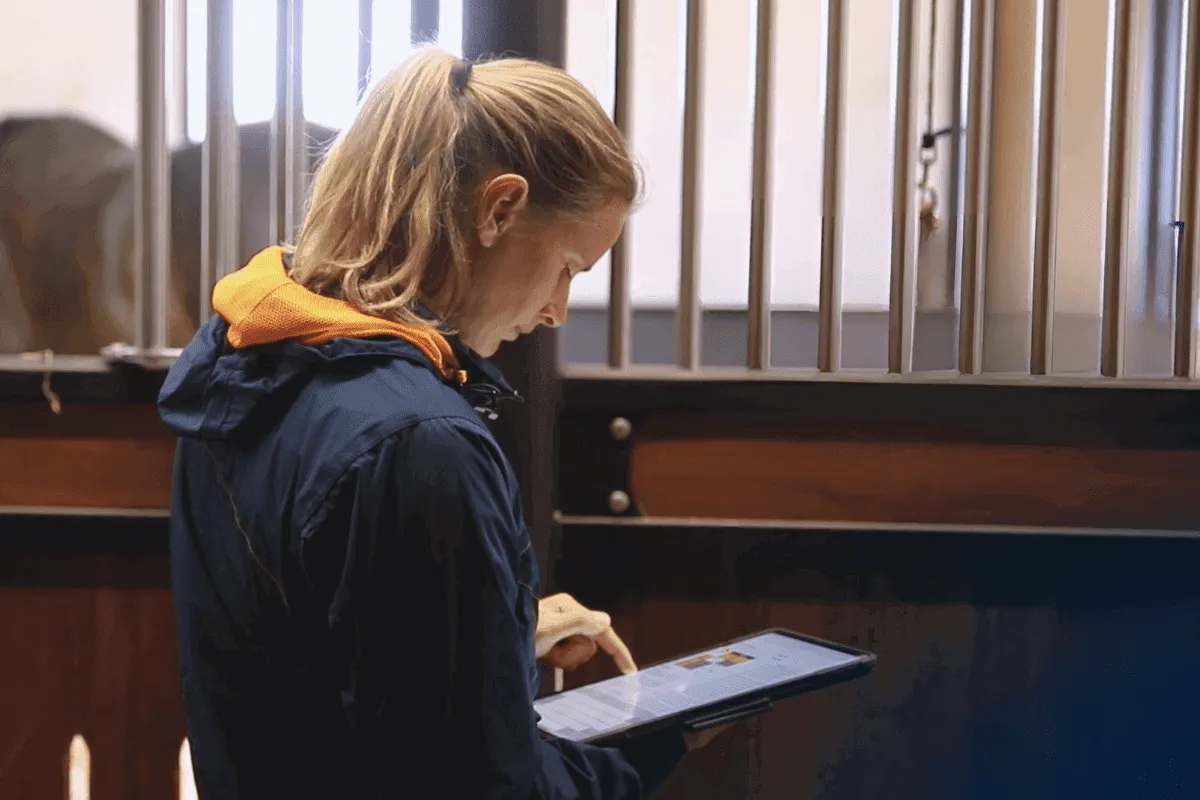Fibre is an essential ingredient in a horse’s ration. That’s well-known. You know that fibre plays a crucial role in equine digestion, but what about fibre as a source of carbohydrates (energy)? In this Science Sunday, we discuss fibre and carbohydrates, why horses need them and which types of fibre are good sources of carbohydrates. At the end of the article, you will also find some useful tips from our nutrition experts!
A horse uses energy through the whole day. Sometimes a bit more, for example during intense work, and a bit less at other times, for example during sleep. All bodily processes use energy and it has to come from somewhere. Like us humans, horses need carbohydrates for energy. There are different types of carbohydrates – monosaccharides (simple sugars like glucose and fructose), disaccharides (compound sugars like sucrose and lactose) and polysaccharides (multiple sugars like starch and cellulose). The equine body uses carbohydrates as a source of energy to be used as fuel for the cells.
Dietary fibre
When we talk about fibre, we mean dietary fibre. Dietary fibre consists of carbohydrates that are fermented by bacteria. A horse needs fibre not only for energy, but also for healthy bowel movements and a strong immune system. Fibre is actually an essential “multi-tool” in the horse’s body, ensuring a well-functioning gastrointestinal tract which in turn ensures proper absorption of nutrients and good immunity.
Types of fibre
That fibre performs an important function in digestion is not saying anything new. Horses are herbivores; they eat only plants, and their whole system is adapted to this type of feed. Fibre sources may vary, but it generally comes from plants – grass, but also lucerne, beet pulp, cereal husks and even (to a lesser degree) concentrate feeds.
In short, you can divide fibre into two types: fermentable and non-fermentable fibre. Bacteria break down fermentable fibre in the caecum and large intestine. It is then converted into volatile fatty acids that provide energy for the horse’s body. Non-fermentable fibre does not provide energy but is important for healthy bowel activity. Forage has a high proportion of fibre that a horse can easily digest. A horse’s daily supply of forage provides its basic fibre requirements. Concentrates may also contain fibre. For example, Cavalor FiberForce is a high-fibre feed.
Below you’ll find an interesting video that we made about equine digestion.
The importance of prebiotics
The gut microbiome is something you often encounter in relation to fibre. Many microorganisms, such as bacteria, viruses and yeasts, live in and on the body. Collectively, these are called the microbiome. A predominance of good microorganisms means that the gut microbiome has a positive influence on the horse’s health. High-fibre feeds support the development of a stable and healthy microbiome. Prebiotics feed “good” bacteria and fibre is a natural prebiotic.
Fibre quality
It is difficult to make a 100% accurate estimate of a horse’s fibre intake. You can learn a lot about it, though, from a horse’s manure droppings. They should be nice and round, not watery, stalky, or dry. A very coarse texture can tell you something about the horse’s teeth as well as the health of its intestinal flora. A disrupted gut microbiome cannot digest fibre adequately. Pre- or probiotics can help. Colic and diarrhoea are also often related to fibre intake. The solution is a ration with adequate fibre. The quantity of fibre cannot be determined with the naked eye; fortunately, a comprehensive analysis offers a solution. You can use this to determine the digestibility of the crude cellulose and the quality of the fibre. In general, forage analyses are only useful if you feed hay or haylage from a large batch all originating in the same country.
An analysis provides insight into the quality of the raw cellulose
The longer the fibres (>2 centimetres), the longer the horse has to chew, and the more saliva is produced. This is good for neutralising stomach acid. Long fibres also stimulate intestinal motility which ensures proper digestion and less chance of colic. Saliva isn’t the only benefit of long chewing. It also causes the teeth to wear down and helps the feed to be absorbed more slowly.
The subject of fibre is hugely important when it comes to healthy and good equine nutrition. We even dedicated an issue of Valor to it, which you can read here.
Tips from the specialist
Fibre is important for overall health. A horse will get most of the fibre it needs from forage, but you can supplement the feed ration with concentrates to provide extra support. Concentrates with fibre are an ideal addition to the ration.
Veterinary surgeon Erica Reijerkerk knows all about the internal equine health. She has some tips:
- Always feed adequate fibre through forage and concentrates. An unlimited supply is not always better. A horse benefits more from multiple servings in a day tailored to its energy needs.
- The teeth are the first step in the digestive process. Have your horse’s teeth checked annually!
- Exercise affects digestion. Match the ration to your horse’s level of physical activity
- Do a daily screening to get a good overview of your horse’s health




